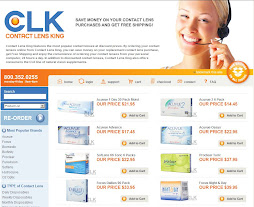If your eyes have feelings of dryness, scratching, burning, or the sensation that something is in your eye, then you may be suffering from dry eye syndrome (what doctors call keratitis sicca). It is basically diminished amount of moisture due to evaporation or rapid draining of the tear film on the eye; it can also refer to a lack in the quality of tears, as they are made up of three components: oil, water, and mucous.
Some factors that lead to dry eye include the natural aging process; side effects from medications; dry, dusty or windy climates (don’t discount indoor ‘climates’ such as home or offices affected by air conditioning or heating systems that dry out eyes); smoking; and insufficient blinking caused by concentrating on computer screens and the like. There are also health conditions that can play a role: eye gland disorders, rheumatoid arthritis, and diabetes.
Contact lens wearers can also fall into a pattern of dry eye, as this is a complaint from roughly 50% of users. However, combinations of treatment and types of lenses made to offset dry eye means one does not necessarily have to give up contacts.
First, if you suspect dry eye problems visit your eye doctor for a full examination to determine the type and extent of the disorder. From there, a treatment plan can be established. In recent years, developments both with contact lenses and other products have brought new weapons to the dry eye front.
Among the contact lens brands in this regard are Acuvue Oasys, Focus Night & Day, Ciba O2 Optix, Acuvue Advance, Bausch & Lomb PureVision and Proclear Compatibles. Using these lenses alone or in combination with doctor-approved eye drops or prescription medications have helped many with dry eye. Drops with cyclosporine in a castor oil base aid the body in producing more tears; this is more popularly recognized as Restasis. Other measures that can be taken include maintaining good care of your lenses, being more mindful about blinking frequently and completely throughout the day (which keeps up the natural wetting process), and re-soaking the lenses in solution for a few minutes to extend comfortable wear time.
When it comes to producing tears with the proper consistency, nutrients such as omega-3 fatty acids and oils gleaned from fresh-water fish are helpful. Flaxseed oil is also recommended.
Surgically, there is a process where punctal (also called lacrimal) plugs can be inserted in the tear ducts to slow the draining of moisture from the eye. The process is painless and usually the plugs are not felt after they are in place. There is also an insert that can be set inside the lower eyelid that releases a lubricating agent throughout the day.
With contact lens manufacturers, medical researchers, and other professionals continuing to look for better ways to minimize or eliminate dry eye syndrome, it is only a matter of time until discomfort from this problem becomes a thing of the past.
Friday, May 14, 2010
Dry Eye Syndrome in Regards to Contacts
Subscribe to:
Post Comments (Atom)





No comments:
Post a Comment